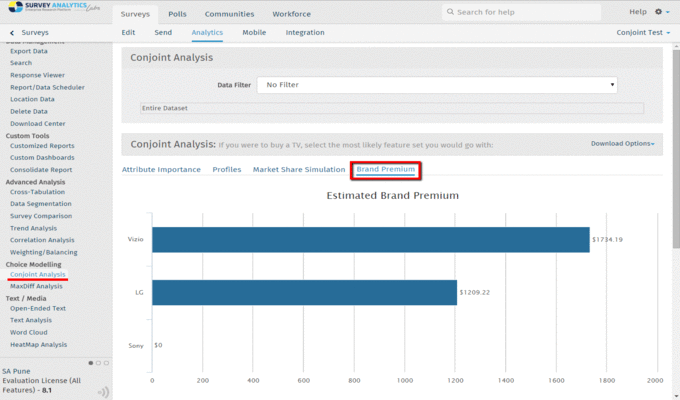
In 2013, Apple faced litigation from over 59 patent holders – claiming infringement. We also have seen an enormous amount of uptake in patent litigation – between corporate technology giants like Apple, Samsung and Microsoft.
One of the fundamental issues around patent litigation is the value of the feature or tool that is being infringed on. Typically patent litigation around a product consists of one company including a feature or a tool that is covered by a patent. For example, in Apple’s case it lost a “Swipe to Unlock” feature – that it had patented, in a German court – however it did win against Motorola in the United States.
In such patent litigations, invariably the question is largely around damages and the model for computations of the damages. Obviously there are competing theories around how much a feature is valuable to a product. Here is where Conjoint Analysis comes to the rescue.
Conjoint Analysis can assign unique utility values – essentially a measure of importance – to each feature in a product. Fundamentally Conjoint Analysis allows us to break down a product into its constituents elements – its primary attributes. Once a product is broken down into its constituents, we can assign utility values to each of the levels of an attribute. If price is one of the attributes, we can also estimate the physical dollar value of each of the attributes.
Recently patent trial lawyers have been experimenting with Conjoint modeling to determine valuation of the features that are under infringement. This also gives a clear case of coming up with a model to determine how much a feature is valued.
QuestionPro has a built in Brand Equity Measurement Model – whereby brand is just another feature.
In this particular case, we are measuring the brand equity based – but this same use case can be extended to measure product feature valuation.
How is the Feature Valuation (or Brand Equity) computed?
The fundamental thesis here is that – when we do a conjoint study – we determine utility – this is the numeric value / score associated with each attribute of a product. For example, if we think of a mobile phone example: We will typically generate a table like this
Brand:
|
Utility.3
.8 |
Screen Size:
|
-.1.5 |
Cost:
|
.6.2 |
Conclusion:This gives a simple model to determine the $/Utility. The Cost attribute gives us a model for a $/Utility distribution – and we can leverage that to compute the actual dollar amount, relative to a base for _both_ screen size as well as brand.
Conjoint Analysis can not only be used for Brand Equity measurement, but also feature valuation – since effectively from a technical standpoint – brand is simply another feature – that customers are evaluating – when making a purchasing decision. Typically conjoint models have been used for customer preference evaluations – but with the introduction of the cost/pricing element, we can not determine economic demand curve for all the attributes.
Further Reading:
Greg Allenby and his team of researchers have expanded upon this model, not only to include the demand side – but they have proposed, for patent disputes, a model for loss of profit due to infringement. Read it here.








